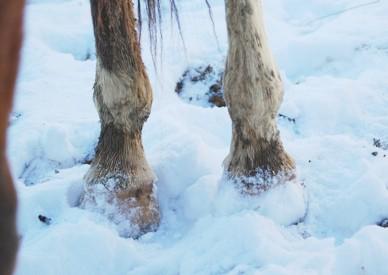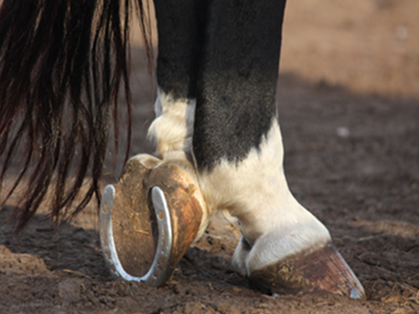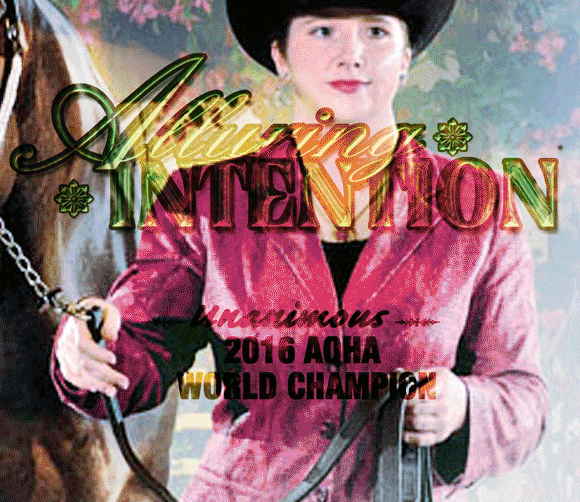Environmental Extremes Can Damage Horses’ Hooves
 By: Hypona
By: Hypona
The environment plays a big role in the condition of a horse’s hoof. Extremes in either direction (wet or dry) can play havoc on the health of a horse’s hooves. If it is too dry, the hooves will be hard and rigid, which can lead to splits and cracks. If it’s too wet, they will tend to be soft and overly pliable. This can lead to hoof wall separation and leave the sole open to bruising as well as increased fungal or bacterial growth, which can compromise the hoof. Additionally, going from wet to rapid drying can compound the damage even more.
Moisture: Friend and Enemy
Excessive moisture in hooves is often worse than having dry hooves. While hooves need to have some moisture to remain healthy, too much moisture can cause the foot to lose its structural integrity and become soft, which can lead to serious problems. Horses that live in wet, muddy environments, or that are bathed repeatedly, are more susceptible to microorganisms, including bacteria and fungi.
Horses that already have poor-quality hooves are at an even higher risk in these environments. Studies by Dr. Susan Kempson, of the Royal School of Veterinary Studies at the University of Edinburgh, show that poor-quality hooves can become even more permeable with prolonged soaking, whereas normal hooves did not become more permeable with prolonged soaking. Additionally, hoof cracks, chipped areas, and horseshoe nail holes create perfect environments for fungal or bacterial growth.
Horses’ hooves are like a piece of untreated wood. If you spray the wood with water once, you will most likely see little difference in it. However, if you submerged the wood in water for an extend period of time, the wood will absorb the water and become soft and weak. Additionally, if you were to dry the wood out rapidly, it would become overly brittle and crack. This constant battle of wet and dry can compromise the integrity of the hoof, much like the wood, which can also lead to cracking and chipping and making it brittle.
If your horse lives in a wet environment, it’s important to reduce the amount of moisture their hooves are exposed to daily. This can usually be done by making a few management changes such as keeping stalls clean and using dry wood shavings. Wood shavings are absorbent and will help dry your horse’s feet. It might also be necessary to adjust your turnout schedule to avoid or limit exposure to moisture. For instance, many horse owners will turn their horses out at night during the summer to avoid the heat of the day and insects. However, this can mean horses are standing in dew soaked grass for 12 hours or more each night. Horse owners can shorten night turnout time or adjust the times when their horses go out to avoid prolonged exposure to the dew soaked grasses. Again, this is especially a good idea for horses with poor quality hooves.
If horses live outside full time in wet, muddy conditions, it’s important to provide a well-drained, dry area, such as a run-in shed or a raised pad for them to stand on. This will give them a break from the wet conditions and allow their feet to dry during the day.
If a horse has problems with excessive moisture, the last thing a horse owner needs to do is add to even more moisture by constantly bathing. This is especially a problem for show and race horses that are bathed or hosed off daily. Instead of bathing, horse owners can sponge horses off, which will help them avoid soaking their horses’ hooves. Additionally, using Hypona’s Hoof Balsam® can help provide a barrier from excess moisture and help keep the hoof sanitary and free from bacteria and fungi.
Too Dry Isn’t Good Either
Horses that live in hot, dry environments are especially susceptible to brittle or cracked hooves. Dried, brittle hooves can become painful and cause lameness if they split or deeper cracks develop. The ideal moisture level for horses hoof is around 25%.
Proper hoof care is essential to keeping hooves healthy and horses sound. Apply an application of moisturizing hoof dressings, such as Hypona’s Hoof Balsam® might be necessary to help the hooves return to or maintain normal health. It might also be necessary to include additional vitamins or minerals (such as Hypona Hoof Maker® and MAGVET®) in the horse’s diet to promote healthy hoof growth.
When the hoof goes from one extreme to the other (wet to dry) too quickly or too often, it can compound the problem presented by both. This is typical of moist climates and when horses are bathed often. When a hoof dries out too quickly, the protein molecules that make up the hoof structure partly go back into place. However, when they go back in place rapidly, there are gaps between the molecules weakening the hoof structure. This causes the hoof to crack and split under stress. When this wet/dry cycle is repeated over and over, it continues to weaken the integrity of the hoof.
Products, such as Hypona Hoof Balm can help protect horses from the damages associated with this type of cycle. Rich Fellers, an Olympic Show Jumper said, “We have been using Hypona hoof oil for years. Our farrier suggested it. We live in a moist climate and at the shows, the horses get their feet wet everyday. He said it would help prevent the moisture from getting into the nail holes of the shoes. Not only does it look nice going to the ring or out for a ride, but it is also helps protect the hoof.”
Each horse is different, one horse might adapt better to a certain situation, while another horse might suffer from hoof problems. It’s important to work with your veterinarian and farrier to make sure you are providing proper management and nutrition for your horse to ensure good hoof health.












